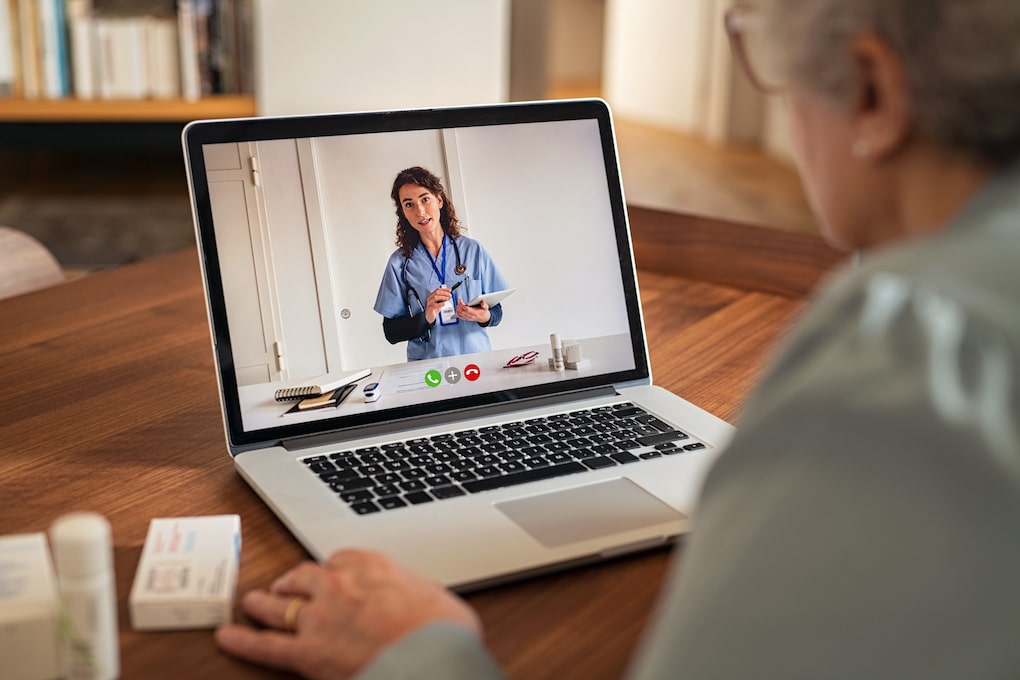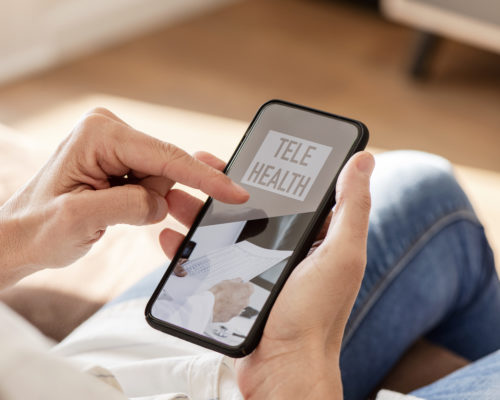There are a few reasons telehealth has grown exponentially in the last few years.
- Advancements in technology make it easier to see a doctor virtually.
- The COVID-19 pandemic made it necessary to flex towards virtual options of healthcare.
- People choose the convenience of virtually accessing their healthcare, especially for things like prescription refills or chronic disease management.
While telehealth appointments are on the rise, there are still some reasons why everyone does not adopt them. Having access to the technology required for a telehealth appointment can hinder one’s utilizing telehealth. Also, adults age 65 and older are far more likely to prefer an in-person appointment with their physician, possibly because of the lack of technological savvy that younger patients have.
Either way, today, we will go through the steps of scheduling a telehealth appointment, the devices you’ll need to do so, and how to make it part of your regular healthcare regimen.
Table of Contents
What is Telehealth?
Mayo Clinic defines telehealth as “the use of digital information and communication technologies, such as computers and mobile devices, to access health care services remotely and manage your health care. These may be technologies you use from home or that your doctor uses to improve or support health care services.”
Telehealth is the remote delivery of healthcare services and information using telecommunications technology. This can include two-way video, email, smartphones, and other forms of computer-mediated communication.
This is not to be confused with telemedicine, which is the remote diagnosis treatment or exchange of medical information using electronic communication from one location to the other. It’s much less involved than telehealth which includes:
- Remote patient monitoring
- Accessible medical records
- Real-time care from anywhere
- Physician to Physician consultations
- Sharing of medical imagery (x-rays, scans, etc.)
As you can see, telehealth makes healthcare more accessible and faster than ever before between both patients and doctors and internally among medical staff.
What Types of Care Can One Receive Via Telehealth?
Some people may be hesitant to utilize telehealth for all their healthcare needs, thinking it isn’t possible. But telehealth isn’t just for urgent care or prescription refills and other simple care. Telehealth can be utilized for all of the following:
- Cardiology and heart health monitoring
- Diabetes care and management
- Genetic counseling
- Mental health therapy
- Primary care
- Prenatal care
- Urgent care
With advancements in technology, patients with chronic conditions can even utilize at-home glucose meters, blood pressure monitors, heart rate monitors, etc. These devices can connect with an application that sends information directly to their providers for ongoing care and treatment. So telehealth can be used in versatile ways that streamline healthcare rather than stall it.
What Are the Benefits of Telehealth?
In addition to the added accessibility, there are many other benefits to telehealth that people may not even realize. Some of the benefits of telehealth include:
- It’s more convenient for patients to receive care from their homes.
- There are no geographical boundaries, so people in rural areas can get the same quality care as those in urban areas.
- It can save money on things like travel and childcare costs.
- Reduced need for time off work.
- Easier management of chronic diseases.
- It keeps other people safe by not having to visit a clinic while you’re sick.
- Easily send medical information to your physician, such as weight, blood pressure readings, glucose levels, etc.
- Manage medications virtually.
- Get text or call reminders regarding upcoming appointments, vaccinations, or procedures.
The list goes on with what is capable with telehealth. Long story short, it streamlines just about every aspect of healthcare and can be highly useful for those who struggle to physically get to appointments, have busy schedules, or live too far away from their clinic or hospital.
While there are plenty of benefits to telehealth, there are also some downfalls, including:
- It requires a computer or smartphone to access.
- You must have a good internet connection.
- Some insurers don’t cover virtual care.
- Time delays or technical difficulties can diminish the level of care received.
- It doesn’t have that face-to-face interaction some people crave.
If you are someone who wants to take advantage of telehealth, you need to know what you need and how to schedule a telehealth appointment—so we’re here to help!
How to Schedule a Telehealth Appointment.
Some things you’ll need to do before scheduling your telehealth appointment include:
- Check your insurance coverage
- Shopping around. Some telehealth apps can be paid for out of pocket and don’t go through a clinic or insurance.
- Ensure you have the proper apps and devices (Zoom, facetime, etc.)
- Determine if your issue is telehealth-friendly or if it will be a waste of an appointment.
Now that you know what you need, let’s move on to scheduling your appointment.
- The first step is reaching out to your doctor or their office and asking if they offer telehealth appointments and the process for setting one up—every office will be different.
- From there, they will likely give you a list of dates and times that work with their schedule, and you’ll choose the one that best works for you.
- You’ll be asked to provide your insurance information (if using) and your email or cell number, so they can send you a link to the video call or whatever platform they’re using.
- A few days before your appointment, you should receive a reminder with all the information you need to know for your appointment.
- This will include how to connect to the call, what platform they’re using, and any other important details.
- If you have any questions or concerns, be sure to reach out to their office, so everything is sorted before your appointment. Technical difficulties can delay your care if you need to reschedule and don’t get the time you need.
It’s important to note that some places like Doctors On Demand, Teledoc, and Sesame Care offer easy-to-use and pay telehealth. If you don’t have a general practitioner, they can be ideal for those looking for a quick appointment.
Managing Your Health Virtually
Telehealth brings a whole new level of care for people looking for easier, faster, and more convenient options. At Pops, we work with people wanting to better manage their diabetes, and telehealth has helped make that happen.
While virtual healthcare still has a long way to go, taking advantage of the benefits is something our customers choose to do for their own sake. Taking control of their health via virtual health care has been a game-changer—and with the support of their virtual tools like the Pops Rebel Glucose Monitoring System, they’ve taken their health back into their own hands. To get started on your virtual diabetes care management, contact Pops today!













